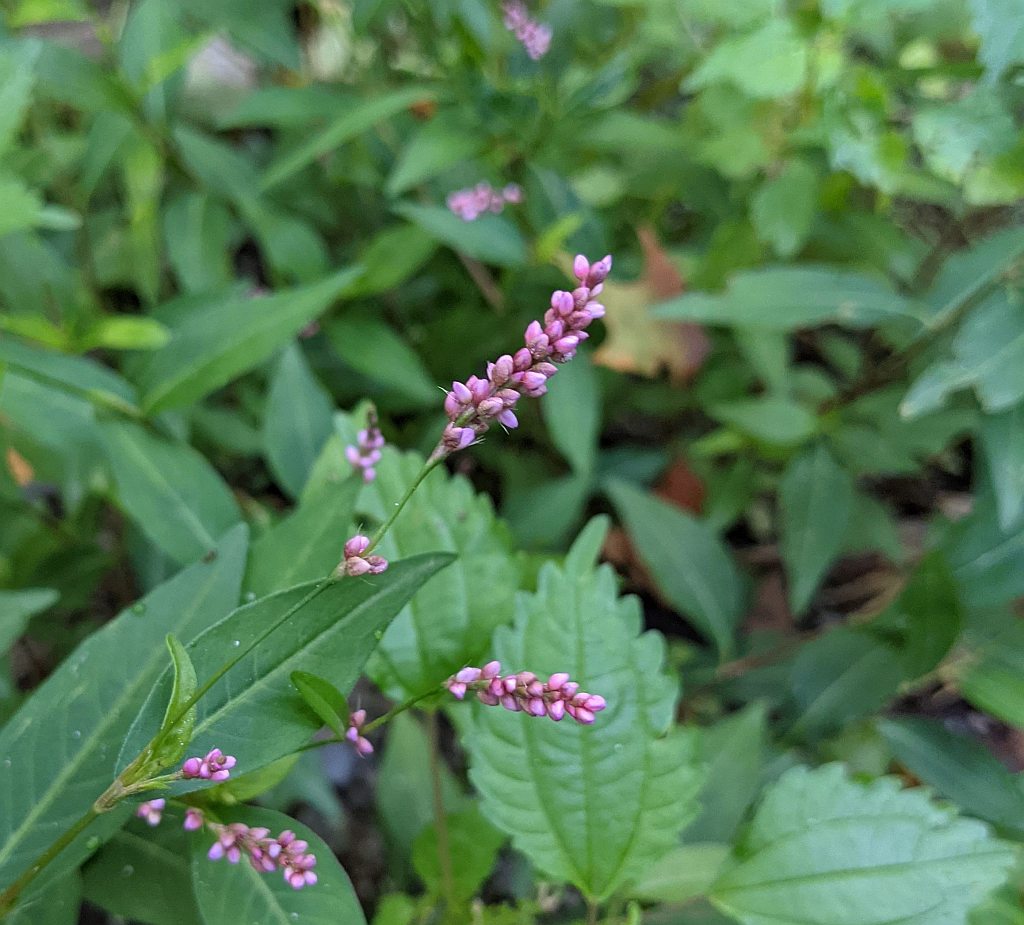
13 September 2021
Today’s article began with a question asked three times: What is that weed? I couldn’t remember the name even though I knew each was in the knotweed family (Polygonaceae) and that a similar native species was named for Pennsylvania.
On the first question I took a picture in Schenley Park, above. On the second question, Claire Bauerle took a picture at Duff Park, below. My plant and Claire’s plant are both alien but not the same species.
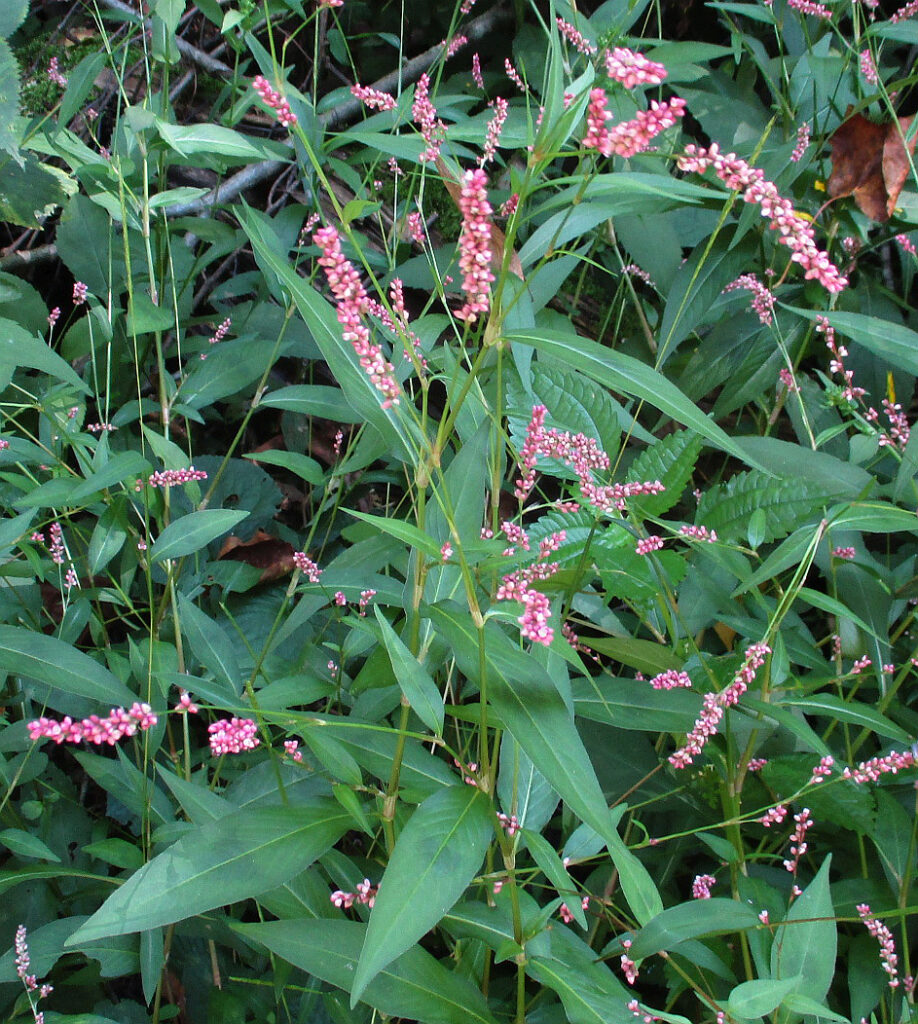
Claire’s plant shows its name on its leaves, a shadowy thumbprint in the center of the leaf.
Lady’s thumb (Persicaria maculosa) is a Eurasian smartweed that first appeared in the Great Lakes region in 1843, has spread across the continent, and is sometimes invasive. The dark thumbprint is a simple way to identify the plant.
My plant is similar but lacks the thumbprint. Not the same species but my photo is not detailed enough for a complete identification. My guess is Oriental lady’s thumb (Persicaria longiseta) a common weed in Asian rice paddies introduced to North America near Philadelphia in 1910 and now found across eastern North America.
The third question was answered on Sunday’s Botanical Society walk on the South Side where we found the smartweed named for Pennsylvania.
Pinkweed or Pennsylvania smartweed (Persicaria pensylvanica) now grows in waste places around the world. Gangly-looking compared to the lady’s thumbs, it has longer stalks, thinner leaves, and fatter, shorter, paler flower heads.
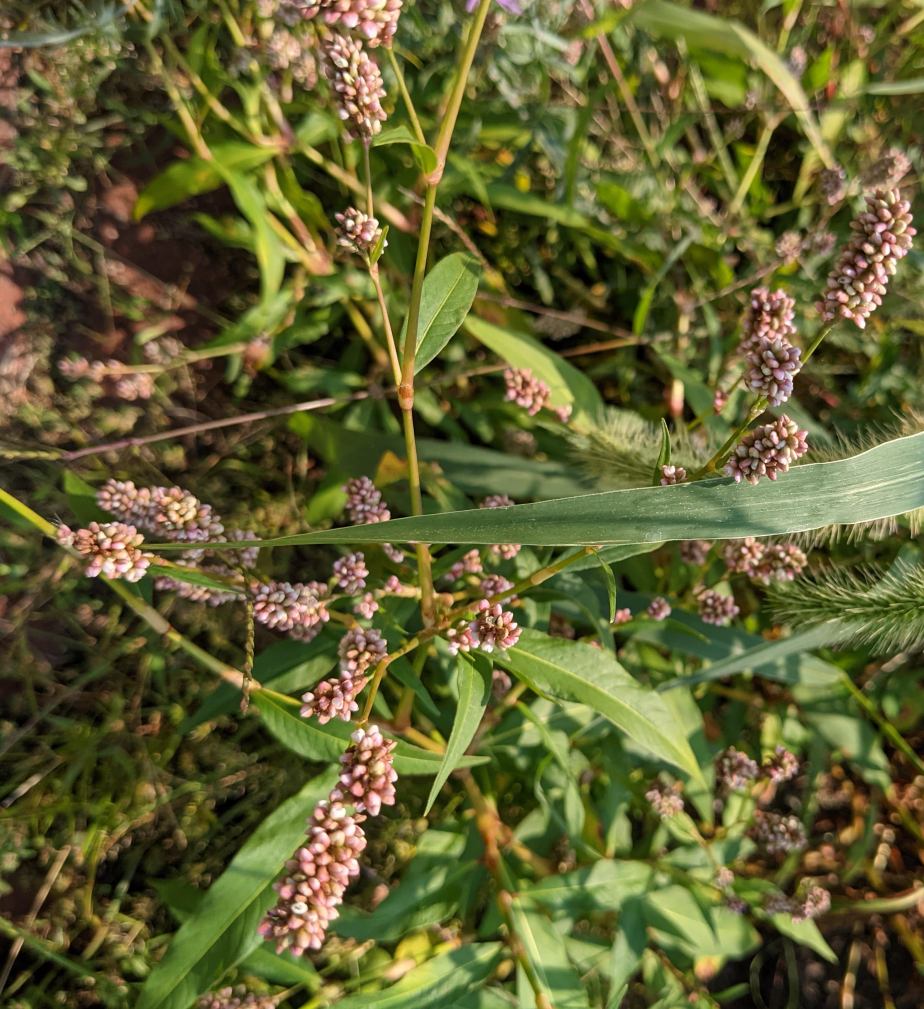
Here’s a single stalk.
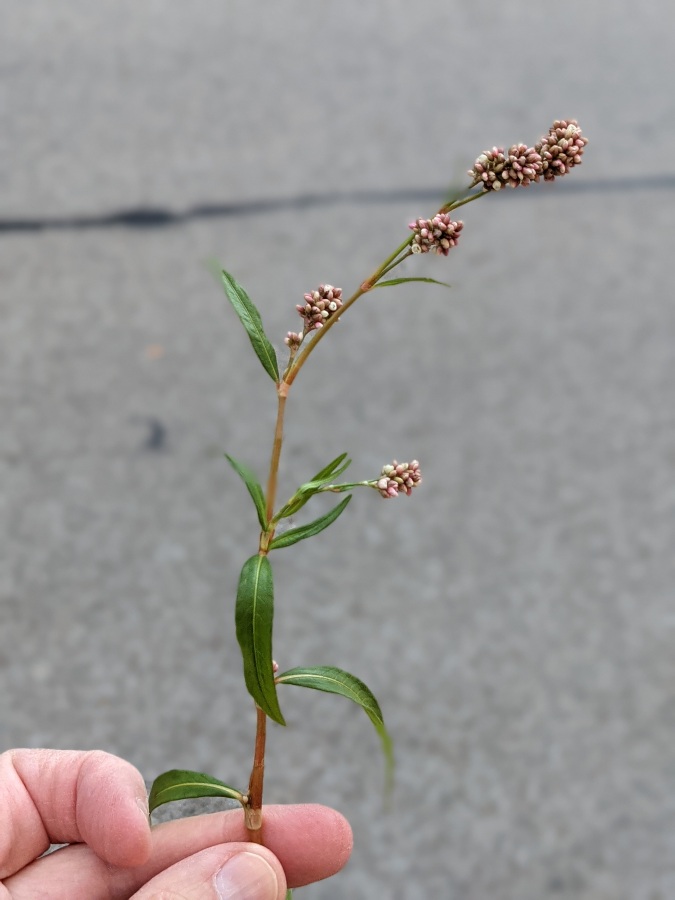
It has no flower bristles like those found on Oriental lady’s thumb P. maculata.
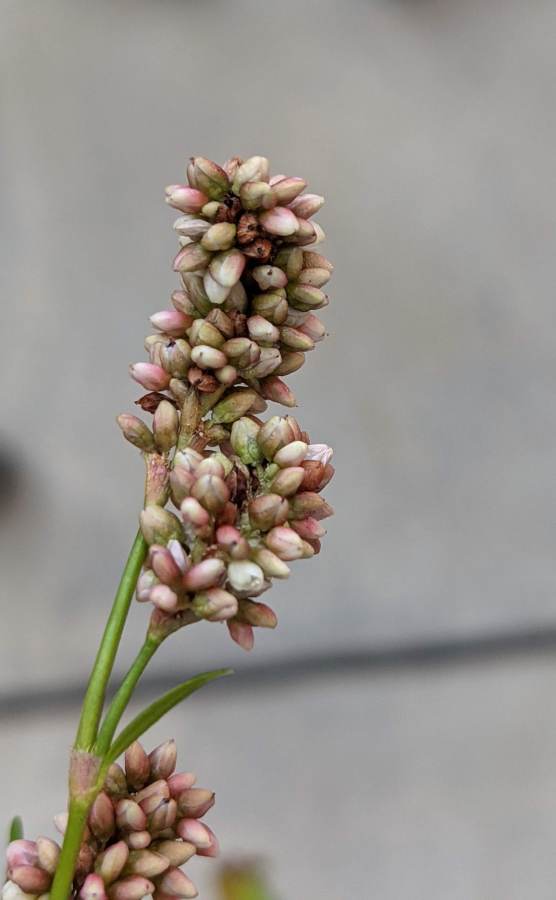
All three smartweeds have stems that connect to the stalks at knot-like ochreas. Two of them, P. longiseta and P. pensylvanicum have bristly ochreas, shown below.
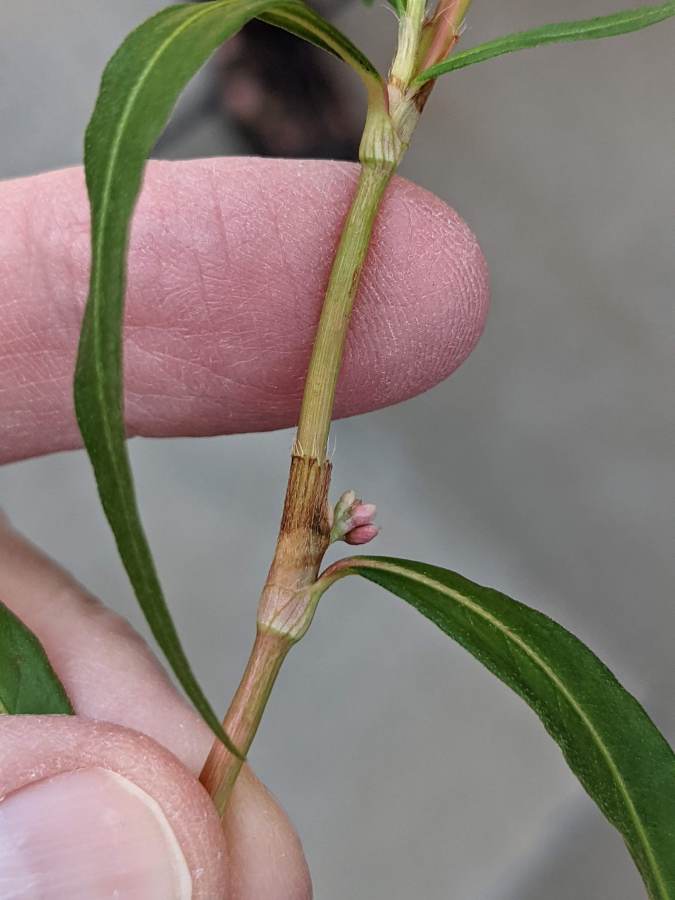
Identifying smartweeds is much trickier than I’ve described so I may have misidentified the first two plants.
If I was smart I’d know what to look for and take better pictures to key them out.
(photos by Kate St. John and Claire Bauerle)
p.s. Three range maps which might not work in Chrome: P. maculosa, P. longiseta, P. pensylvanica
THANK YOU. 🙂
I found a big Stand of Lady’s Thumb today in s.w. Louisiana.. Town of Sulphur ..with the help of plant id app on my phone. Excited…that it’s edible.